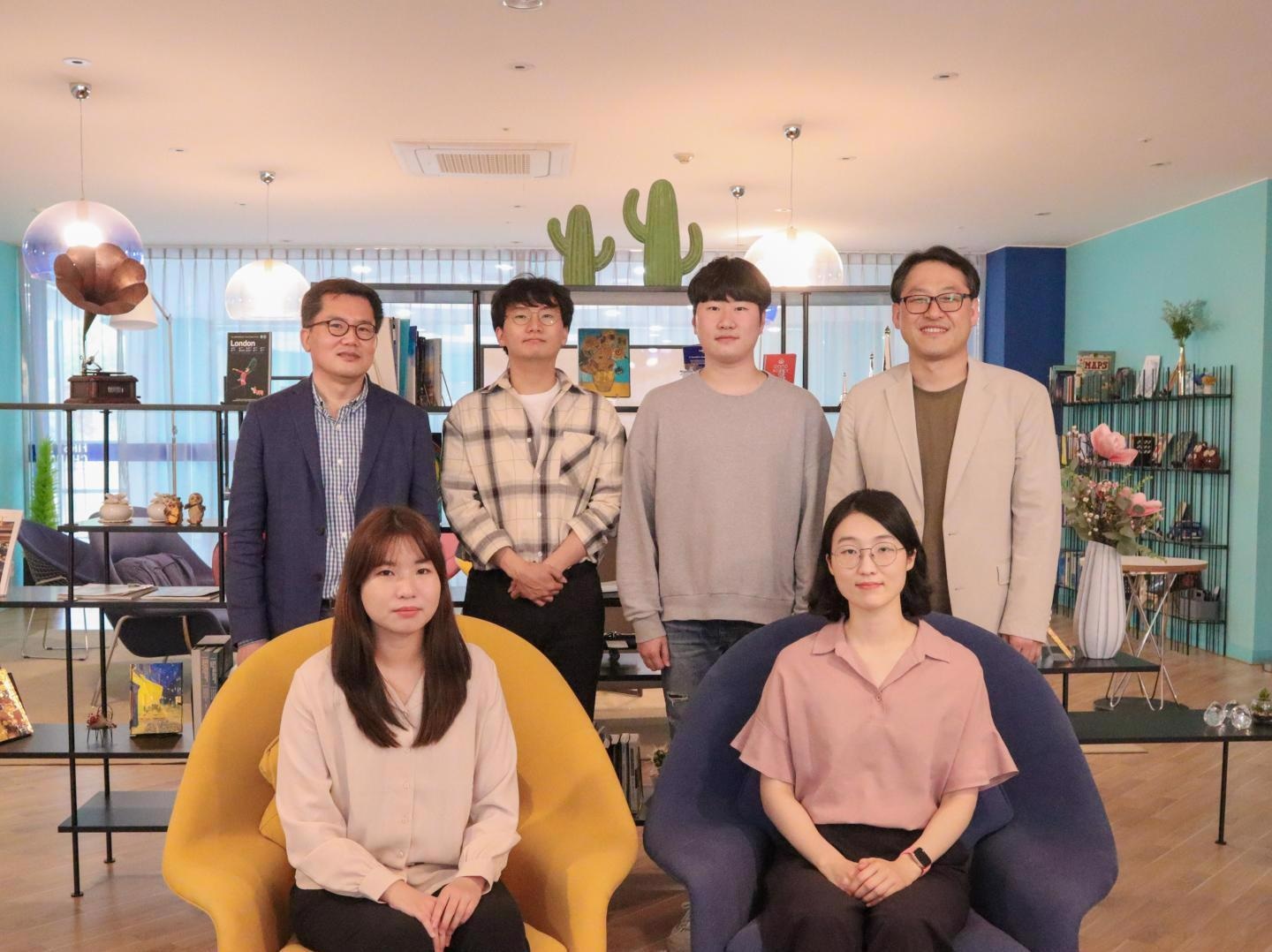May 27 2021
Multifunctional porous solids that have different functionalized linkers have been used as potential materials for numerous applications in biomedical, energy, and environmental fields.
 Professor Wonyoung Choe (top left) and Professor Tae-Hyuk Kwon (top right), and their research team in the Department of Chemistry at UNIST. Image Credit: Ulsan National Institute of Science and Technology.
Professor Wonyoung Choe (top left) and Professor Tae-Hyuk Kwon (top right), and their research team in the Department of Chemistry at UNIST. Image Credit: Ulsan National Institute of Science and Technology.
While the emerging properties of the multifunctional porous solids are attributed to different types of pores that materialize from functional group combinations, the chemical environment of the pores continues to remain an open question. A novel synthetic platform in which the pore population can be detected and additionally managed is of significant interest in the field of materials science.
A team of researchers, headed by Professor Wonyoung Choe and Professor Tae-Hyuk Kwon from the Department of Chemistry at the Ulsan National Institute of Science and Technology (UNIST) in South Korea, has now revealed a new synthetic method in which a cage-based framework, also called metal-organic polyhedra (MOP), is used to control the functional group assemblies in porous solids. The study results are expected to attract a great deal of interest in this valuable synthetic approach for molecular separation, gas storage, and catalysis.
MOPs are the 3D assembly of discrete cages. Although MOPs share compositional similarities (that is, organic linkers and metal clusters) with their solid-state equivalents—metal-organic frameworks (MOFs)—their soluble and discrete nature offers a special advantage.
During their analysis, the researchers designed a two-step self-assembly in which the functionalized cages were combined. The team has dubbed the new synthetic approach “mixed-cage,” which is significantly different from the traditional mixing approach—the so-called “mixed-linker.”
Although the mixed-linker approach leads to a chaotic distribution of functionalized organic linkers across the framework, the mixed-cage approach forms identical functional groups on every cage unit.
The researchers also revealed distinct solvatochromic behavior between a pair of multifunctional solids created by mixed-cage and mixed-linker strategies. The team subsequently analyzed the color variations of fluorescence emissions based on the polarity of solvents. The mixed-linker specimen displayed marked color variations, while the mixed-cage specimen was only mildly impacted by the solvent types.
The study authors also used films to further reveal the in-depth photophysical characteristics. The mixed-cage sample showed higher emission intensity and this was due to the radiative decay kinetics of the mixed-cage specimen, which is higher than that of the mixed-linker specimen.
Structure determines function and solids are not the exceptions. Yet, what is more interesting here is that we find a new way to control the assembly of packing, using metal-organic polyhedra. Such advance can alter the way of controlling the molecule-based solids.
Wonyoung Choe, Professor, Ulsan National Institute of Science and Technology
The study results were published in the Matter journal on May 26th, 2021. It was funded by the National Research Foundation (NRF) of Korea through the Mid-Career Researcher Program, Science Research Center (SRC), Technology Development Program to Solve Climate Changes, and Global Ph.D. Fellowship (GPF), and by Korea Environment Industry & Technology Institute (KEITI) via Public Technology Program based on Environmental Policy Program, financially supported by Korea Ministry of Environment (MOE).
Journal Reference:
Nam, D., et al. (2021) Multivariate Porous Platform Based on Metal-Organic Polyhedra with Controllable Functionality Assembly. Matter. doi.org/10.1016/j.matt.2021.04.027.